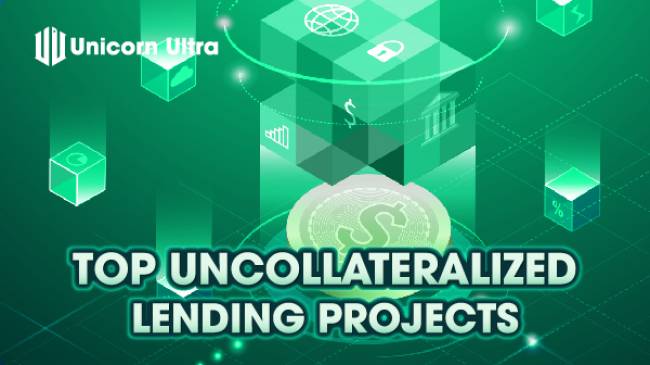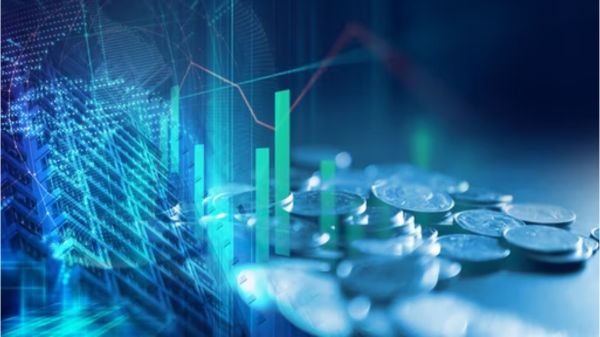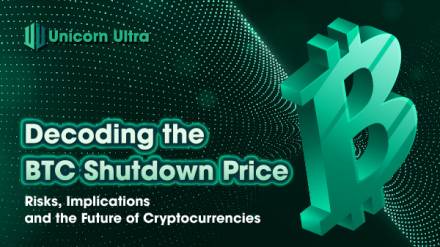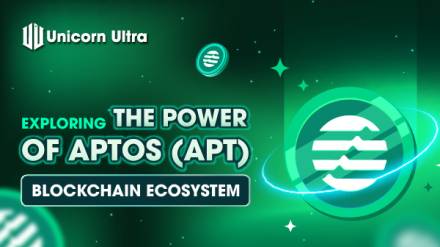The traditional lending system has always relied on collateral to secure loans, leaving many individuals and businesses without access to the necessary funds. However, the emergence of uncollateralized lending projects has introduced a new era in the financial industry. By leveraging innovative technologies like blockchain and smart contracts, uncollateralized lending platforms offer a viable solution for borrowers who lack traditional collateral. In this blog post, we will delve into the concept of uncollateralized lending, explore some of the top uncollateralized lending projects in this space, and outline the criteria for choosing the right uncollateralized lending project.
Table of Contents
Top Uncollateralized Lending Projects

Compound Finance
Compound Finance is one of the pioneers in the uncollateralized lending space. Built on the Ethereum blockchain, Compound allows users to lend and borrow cryptocurrencies without the need for collateral. The platform employs an algorithmic interest rate model that adjusts based on supply and demand, ensuring efficient allocation of funds.
Aave
Aave is another prominent uncollateralized lending platform that operates on the Ethereum blockchain. It utilizes a unique feature called "Flash Loans," which enables users to borrow funds without collateral as long as the loan is repaid within a single transaction. Aave's lending protocol offers a wide range of crypto assets and utilizes an innovative risk assessment framework.
Dharma
Dharma is a user-friendly lending platform that facilitates uncollateralized lending for both individuals and businesses. It allows users to access funds using their creditworthiness, reputation, and other non-traditional indicators. Dharma's platform also provides borrowers with the flexibility to repay loans on their terms.
Cream Finance
Cream Finance is a decentralized lending and borrowing platform that operates on the Ethereum blockchain. It offers uncollateralized loans by leveraging a diverse range of assets as collateral. The platform also features competitive interest rates and supports a variety of cryptocurrencies.
Lendf.me
Lendf.me is an uncollateralized lending project that operates on the Ethereum network. It utilizes a unique credit system that evaluates users based on their creditworthiness and transaction history. Lendf.me aims to create a decentralized credit market that provides equal access to financial services.
How do Uncollateralized Lending Projects work?
Uncollateralized lending projects, also known as unsecured lending projects, aim to provide loans to borrowers without requiring any collateral as a form of security. Instead, these projects rely on other factors to assess the creditworthiness of borrowers and mitigate the risk of default. Here's a general overview of how uncollateralized lending projects work:
- Creditworthiness assessment: Uncollateralized lending projects typically employ various methods to assess the creditworthiness of borrowers. This assessment includes analyzing factors such as the borrower's credit history, income, employment status, and other relevant financial information. Some projects may also use alternative data sources, such as transaction history on blockchain networks or social media data, to evaluate borrowers.
- Risk scoring: Based on the creditworthiness assessment, uncollateralized lending projects assign a risk score or rating to each borrower. This score helps determine the interest rate and loan terms that borrowers are offered. Higher-risk borrowers may receive loans with higher interest rates to compensate for the increased risk, while lower-risk borrowers may receive more favorable terms.
- Loan terms and interest rates: Once the risk assessment is complete, uncollateralized lending projects determine the loan terms and interest rates for approved borrowers. The loan terms include the loan amount, repayment period, and repayment schedule. Interest rates are typically based on the borrower's risk profile, with lower-risk borrowers receiving lower interest rates.
- Loan issuance: After borrowers agree to the loan terms, uncollateralized lending projects disburse the loan amount to the borrower. The borrower then assumes the responsibility to repay the loan based on the agreed-upon terms, including principal repayment and interest payments.
- Monitoring and collections: Throughout the loan tenure, uncollateralized lending projects actively monitor borrowers' repayment behavior. They may employ various mechanisms to ensure timely repayments, such as automated reminders, notifications, or penalties for late payments. In cases of default or non-payment, projects may take appropriate actions, including debt collection efforts or reporting the delinquency to credit agencies.
- Risk management: Uncollateralized lending projects employ risk management strategies to mitigate the potential losses from defaults. This may include diversifying loan portfolios across different risk profiles, implementing strict underwriting criteria, and continually monitoring and assessing the overall risk exposure of the lending platform.
It's important to note that the specific workings of uncollateralized lending projects can vary among different platforms and projects. Factors such as regulatory compliance, geographic limitations, and platform-specific features can influence how these projects operate. Prospective borrowers should carefully review the terms and conditions of each project and consider the associated risks before participating.

What are the risks associated with Uncollateralized Lending?
Uncollateralized lending, also known as unsecured lending, carries several risks that both lenders and borrowers should be aware of. Here are some common risks associated with uncollateralized lending:
- Default Risk: Uncollateralized loans are not backed by any collateral, which means that if a borrower defaults on the loan, the lender has limited recourse to recover their funds. This poses a significant risk to lenders as they may face losses if borrowers fail to repay the loan.
- Credit Risk: Uncollateralized lending relies heavily on the creditworthiness of borrowers. If borrowers have a poor credit history or lack a stable income, there is an increased likelihood of default. Lenders need to carefully assess the creditworthiness of borrowers to mitigate credit risk, but there is always the possibility of misjudgment or inaccurate credit assessments.
- Interest Rate Risk: Interest rates on uncollateralized loans are typically higher compared to secured loans. However, interest rate risk still exists, as changes in market conditions or macroeconomic factors can impact the borrower's ability to repay the loan. For example, if interest rates rise significantly, borrowers may struggle to make higher monthly payments.
- Operational Risk: Uncollateralized lending platforms are susceptible to operational risks, such as system failures, technical glitches, or security breaches. These risks can lead to disruptions in loan processing, data breaches, or unauthorized access to sensitive borrower information. Proper security measures and risk management protocols are essential to mitigate operational risks.
- Regulatory and Legal Risks: Uncollateralized lending platforms operate within a regulatory framework, and non-compliance with applicable laws and regulations can lead to legal and reputational risks. Additionally, regulatory changes or uncertainties in the legal landscape can impact the viability of uncollateralized lending platforms and introduce compliance challenges.
- Market and Economic Risks: Uncollateralized lending is influenced by market and economic conditions. Economic downturns, market instability, or changes in borrower behavior can impact the repayment capacity of borrowers and increase the risk of defaults. Lenders should be prepared for these risks and have mechanisms in place to mitigate their impact.
Both lenders and borrowers should carefully assess these risks and conduct due diligence before participating in uncollateralized lending projects. Lenders should establish robust risk management practices, including credit assessments, diversification strategies, and contingency plans. Borrowers should evaluate their repayment capacity, interest rate affordability, and understand the terms and conditions of the loan before borrowing.
How to start Uncollateralized Lending?
Starting an uncollateralized lending business requires careful planning, adherence to regulatory requirements, and the implementation of robust risk management practices. Here are the general steps to consider when starting an uncollateralized lending venture:
1. Research and Market Analysis: Conduct thorough research to understand the uncollateralized lending market, including its size, competition, and potential target audience. Identify the specific niche or borrower segment you wish to serve and evaluate the demand for uncollateralized loans in that market.
2. Develop a Business Plan: Create a comprehensive business plan that outlines your lending model, target market, revenue projections, marketing strategies, and operational requirements. Determine the legal structure of your business (e.g., sole proprietorship, partnership, or corporation) and seek professional advice if necessary.
3. Obtain Necessary Licenses and Permits: Determine the regulatory framework and licensing requirements applicable to uncollateralized lending in your jurisdiction. Obtain the necessary licenses, permits, or registrations to operate legally. Compliance with anti-money laundering (AML) and know your customer (KYC) regulations is crucial to mitigate legal and regulatory risks.
4. Establish Risk Management Practices: Develop robust risk management practices to assess borrower creditworthiness and evaluate loan applications. This may include credit scoring models, income verification, employment checks, and other relevant due diligence processes. Establish internal policies and procedures to mitigate credit risk and establish appropriate loan terms and interest rates.
5. Build a Technology Platform: Develop or acquire the technology infrastructure required to manage loan applications, automate processes, and track loan repayment. This may include developing a secure online platform or partnering with a technology provider specializing in lending solutions.
6. Secure Funding: Determine the capital requirements for your uncollateralized lending business, including initial loan capital, operating expenses, marketing costs, and regulatory compliance expenses. Secure adequate funding through equity investments, loans, or partnerships with investors.
7. Legal and Compliance Considerations: Ensure compliance with local laws and regulations governing lending practices, consumer protection, privacy, and data security. Implement measures to safeguard borrower information and establish robust data protection protocols.
8. Marketing and Customer Acquisition: Develop marketing strategies to reach your target audience and acquire borrowers. This may include online advertising, partnerships with referral sources, and creating brand awareness through digital channels or traditional marketing methods.
9. Launch and Monitor Performance: Launch your lending platform and start accepting loan applications. Continuously monitor the performance of your loan portfolio, track repayment rates, and adjust risk management strategies as needed. Regularly review and update your lending policies and procedures to adapt to market conditions and regulatory changes.
10. Customer Service and Collections: Provide excellent customer service to borrowers, including responsive communication channels, timely support, and assistance with loan repayments. Implement collections processes for delinquent loans, including follow-up communications, negotiation, and, if necessary, engaging external collection agencies.
Starting an uncollateralized lending business involves various legal, financial, and operational considerations. It's essential to consult legal and financial professionals to ensure compliance with regulations and to establish sound lending practices.
Criteria for Choosing an Uncollateralized Lending Project

When selecting an uncollateralized lending project, it's essential to consider certain criteria to ensure a secure and reliable experience. Here are some key factors to evaluate:
- Security: Look for projects that employ robust security measures, such as audited smart contracts, strong encryption, and secure custody of funds. Transparency in the project's security practices is crucial to protect your assets.
- Track Record and Reputation: Research the project's history and reputation within the crypto community. Look for projects with a proven track record, experienced teams, and positive user feedback.
- Asset Availability: Check if the lending platform supports a diverse range of assets. A wider selection of cryptocurrencies allows for greater flexibility in borrowing and lending options.
- Interest Rates and Fees: Compare the interest rates and fees charged by different platforms. Look for competitive rates that align with your financial goals and risk tolerance.
- User Experience: Evaluate the user interface and experience of the lending platform. An intuitive and user-friendly interface can significantly enhance your overall experience.
- Regulatory Compliance: Ensure that the platform complies with applicable regulations and legal frameworks. Compliance measures add an extra layer of security and protect users from potential risks.
Conclusion
Uncollateralized lending projects have revolutionized the financial landscape by offering loans without traditional collateral. These projects leverage blockchain technology and innovative algorithms to assess creditworthiness and mitigate risks. As the industry continues to evolve, it is crucial to research and evaluate the top uncollateralized lending projects based on criteria such as security, reputation, asset availability, interest rates, user experience, and regulatory compliance. By choosing the right uncollateralized lending project, individuals and businesses can access the funds they need, fostering financial inclusion and empowerment in the digital age. Follow Uniultra.xyz to update more crypto investment knowledge.






